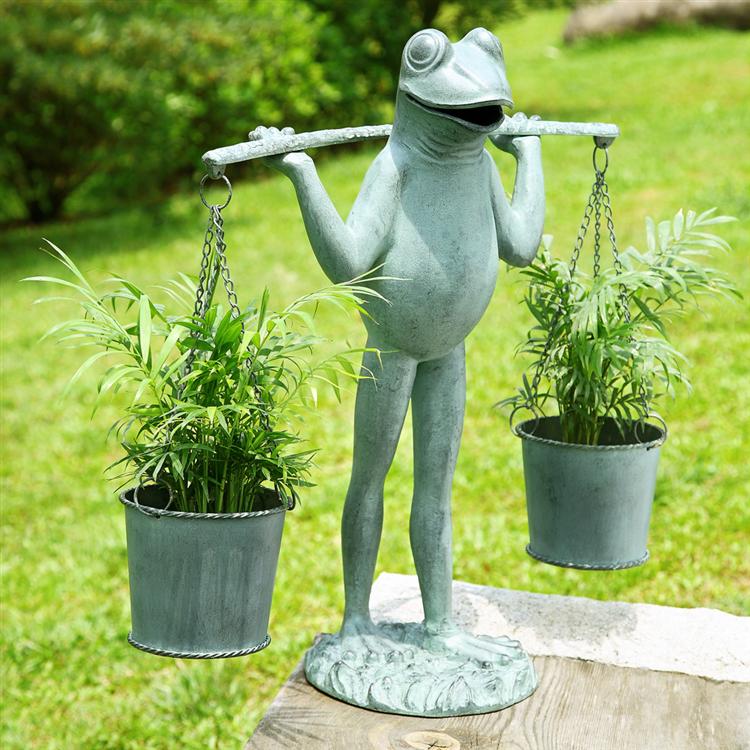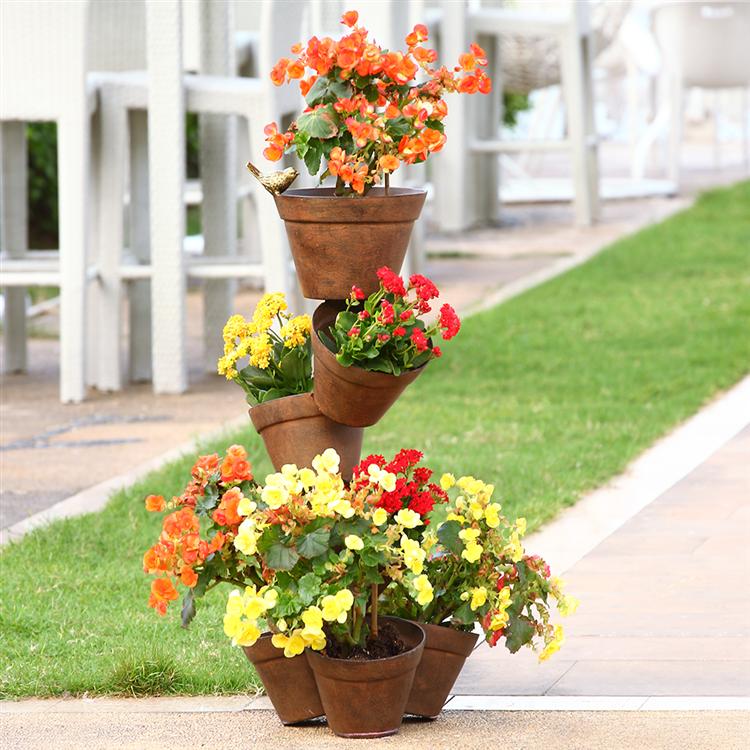Space and climate are just two of the reasons container gardening has seen a resurgence in popularity in recent years. With new technology in watering like drip irrigation and hydroponics, residential and commercial growers alike are finding it even easier to grow plants year-round in containers. Even if you don’t want to feed your neighborhood from your spare bedroom, container plants offer the ability to create a look or dress up a small patio. Almost every plant can be grown from containers –vining plants and vegetables, ornamentals, even trees! Just like with any plant, there are several factors that must be taken into consideration when planning your potted garden or raised bed.
Sunlight: specifically where, when and for how long it hits the area you plan (or have available) to grow in is the single biggest factor you have to account for. Every other aspect of the growing process can be controlled by you. Many varieties of plants and vegetables are hearty enough to survive in full sun for over six hours, but many are not. Before having your heart set on a particular variety, make sure you can keep watch on the location and see how much, if any, sun it gets. Usually a weekend day will be good for this. You also need to keep in mind which growing zone you reside in. Your growing season up north will be short, where the growing season in the South (we’re zone 9) is longer. As the Earth rotates and the seasons change, so will the sun’s position. That can easily cause a plant to suddenly loose some of that much-needed sun. Also important to knowing your zone is buying plants that are conditioned to grow in your area. Full sun in Florida is not the same as full sun further north. Many a norther gardener with dreams of an equivalent southern rose garden have been disappointed.
While you search for those plants and vegetables that will set off your look, make sure you understand what the various sun requirements mean. Full sun, 6 plus hours, should mean your plant will be fine even if you place it in a location that gets sun all day, or a little less. If there is a tree or anything else that will block the sun at some point during the day that can cause problems. These plants absolutely need that much sun! Partial shade is the trickiest, at least for me. These flowers need sunlight but cannot stand direct sun for very long. Same with ‘shade’. They need sunlight, but indirect sunlight only. It is important to do an all-day location test for these varieties especially. That shady front porch entrance could be getting blasted with several hours of sun in the afternoon when you’re not paying attention!
Nutrients are an essential component to healthy plants. If you are constantly losing plants and ripping up your garden, lack of fertilizing to provide proper nutrients can be a big culprit. Not all plants need the same ratio or type of nutrients. Commercially available mixes are produced for specific types of plants and vegetables. Digging and adding compost is not as easy in a smaller pot/container garden. Liquid fertilizer is probably the best bet for those situations. If you are creating raised beds, you can incorporate fertilizer and manure easier when you create the soil mix. When harvest is done, or annuals die, the soil can be prepped again. Make sure you do the same for potted plants. You can use some of the dirt from one plant you removed to pot another, but make sure to add some new soil so it has some much-needed food to help the roots grow.
Watering is the most obvious step in caring for your plants for most people, yet it can be one of the most troublesome. It is possible to both over-water and under-water your plants. What you are trying to grow, type of soil and pot material (dark is hot!) will all determine how much water you need. Pay attention to the little information tabs that come with your plant. It will tell you how often to water. This will be a guideline. Be mindful of your location and weather patterns. If it’s been raining daily, you may need to bring some plants into sheltered areas so they can dry out a bit. Other plants will love it, and you will be spared having to hand water every day. Be careful of specialty soil as well. A particularly wet summer plus moisture control potting mix equaled ruined plants for me a few years ago.
We all want a lush, full garden with blooms touching every available space. To achieve this takes time and that is the second culprit in may failed gardens. Not leaving enough space for the plant to expand and grow will open the door to disease, root trouble and dying plants. With container gardens, it is also especially important to make sure your pot has enough room for the roots to expand and grow. This is especially important for growing fruiting plants. The height and width of the planter should be the same, or the pot can be taller. Short, squat planters may work to start seedlings, but you will need to replant once they start to sprout. Of course, you must also have drainage. If you pot does not have holes pre-made, it is best to create them before filling with soil. Indoor plants can usually be potted without drainage easier than outdoor plants, especially those that will get rain.
The all-important tab that contains basic information tells you how far out to space your plants/vegetables. Listen to it. Don’t figure an inch or two won’t matter! I currently have one pepper plant overrunning another because I wanted to shoehorn them into a space that I really shouldn’t have. In a container you are trying to plant a mix of flowers in, this will mean a short blooming, or the need to re-pot sooner than you wanted (if you wanted to at all). With containers you have less of the ‘dead space’ issue when planting in the ground. Don’t be afraid to use a larger pot to start, even if the plant seems like it’s too small. With proper care, that will change – often quickly!
Personally, I am happy when I come home and see my plants thriving in their pots on my front walk. It relaxes me to care for them and I enjoy the outdoors, if only for a little bit. If you have been frustrated with planting in the past, remember to step back and work with what you have. There are plants in just about every color for each type of growing situation. Take stock of how many pots you can put in your space, what the weather conditions are like, and visit your local nursery. They will be happy to help you choose just the right plants to bring you joy.



